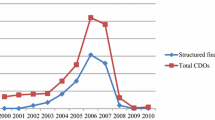Abstract
This paper examines the ethical implications of "poison put" provisions included in bond offerings. A number of firms are using event-risk protections in bond offerings in an effort to attract investors back into the bond market. One of the most common event-risk protections is a "poison put" provision, which allows the bondholder to "put" the bond back to the firm at par or at a premium under certain specified conditions, such as a takeover effort or a downgrading of the bond by rating agencies. While such a provision is obviously of value to the bondholders, there is a secondary effect that is not as obvious. Using such a provision helps to insure that boards of directors must put the interests of all of the stakeholders ahead of any personal interests of the board members, thus protecting the stakeholders. The use of event-risk protections helps to deter takeovers, induce bidders to negotiate with management in any takeover efforts, and avoid two-tier takeover offers. As a result, the "poison put" provisions have a positive impact on share values while simultaneously protecting the investments of bondholders. Such an impact makes the use of "poison put" provisions in bonds an ethical use of management power.
Similar content being viewed by others
References
Allison, J. and R. Prentice: 1993, The Legal Environment of Business (The Dryden Press, Orlando, FL), pp. 494–499.
Asquith, P. and E. Han Kim: 1982, ‘The Impact of Merger Bids on the Participating Firms' Security Holders’, Journal of Finance 37, 1209–1228.
Asquith, Paul and Thierry A. Wizman: 1991, ‘Event Risk, Wealth Redistribution and the Return of Existing Bondholders in Corporate Buyouts’, Journal of Financial Economics 27 (September), 195–213.
Barnea, A., R. A. Haugen and L. W. Senbet: 1980, ‘A Rationale for Debt Maturity Structure and Call Provisions in the Agency Theoretic Framework’, Journal of Finance 35 (December), 1223–1234.
Brown, S. and J. Warner: 1985, ‘Using Daily Stock Returns: The Case of Event Studies’, Journal of Financial Economics 14 (March), 3–31.
Crabbe, Leland: 1991, ‘Event Risk: An Analysis of Losses to Bondholders and Super Poison Put Bond Covenants’, Journal of Finance 46(2) (June), 689–706.
DeAngelo, H. and E. Rice: 1986, ‘Anti-takeover Charter Amendments and Stockholder Wealth’, Journal of Financial Economics 15, 119–151.
Dennis, D. K. and John J. McConnell: 1986, ‘Corporate Mergers and Security Returns’, Journal of Financial Economics 16 (June), 143–188.
Eckbo, B. E.: 1986, ‘Valuation Effects of Corporate Debt Offering’, Journal of Financial Economics 15, 119–151.
Fields, J., D. Kidwell and L. Klein, L.: 1991, ‘RJR Nabisco and Event Risk Protection: The Evolution and Valuation of Event Risk Provisions in Corporate Debt’, Working Paper, University of Connecticut.
Harris, M. and A. Raviv: 1988, ‘Corporate Control Contests and Capital Structure’, Journal of Financial Economics 20, 55–86.
Israel, R.: 1991, ‘Capital Structure and the Market for Corporate Control: The Defensive Role of Debt Financing’, Journal of Finance 46, 1391–1409.
Jarell: 1985, ‘Takeovers and Buyouts Clobber Bluechip Bondholders’, Business Week, No. 2920 (November 11), 113–114.
Jensen, Michael C.: 1988, ‘Takeovers: Their Causes and Consequences’, Journal of Economic Perspectives 2, 24.
Jensen, Michael C. and W. Meckling: 1976, ‘Theory of the Firm: Managerial Behavior, Agency Costs and Capital Structures’, Journal of Financial Economics 4 (October), 305–360.
Kubasek, N., B. Brennan and M. N. Browne: 1996, The Legal Environment of Business (Prentice Hall, Inc., Upper Saddle River, N), pp. 391–409.
Lehn, K. and A. Poulson: 1989, ‘Free Cash Flow and Stockholder Gains in Going Private Transactions’, Journal of Finance 44 (July), 771–787.
Light, L.: 1989, ‘Investors are Developing a Taste for Poison’, Business Week, No. 3114 ( July 10), 78.
Malatesta, P. H. and R. A. Walking: 1988, ‘Poison Pill Securities: Stockholder Wealth, Profitability and Ownership Structure’, Journal of Financial Economics 20, 347–376.
McDaniel, Morey: 1988, ‘Bondholders and Stockholders’, Journal of Corporate Law 13, 205.
Meade, N. and D. Davidson: 1993, ‘The Enactment of Shark Repellents May Be a Violation of the Duty of Due Care’, Advances in Public Interest Accounting 5, 269–280.
Mikkelson, W. and M. Partch: 1986, ‘Valuation Effects of Security Offerings and the Issuance Process’, Journal of Financial Economics 15, 31–60.
Mitchell, Constance: 1992, ‘Marriot Plan Enrages Holders of its Bonds’, Wall Street Journal CCXX(70) (October 7), C1, C19.
Myers, S. C.: 1977, ‘Determinants of Corporate Borrowing’, Journal of Financial Economics 5 (March), 147–175.
Ryngaert, M.: 1988, ‘The Effect of Poison Pill Securities on Shareholder Wealth’, Journal of Financial Economics 20, 377–417.
Schleifer, A. and R. W. Vishny: 1989, ‘Management Entrenchment: The Case of Manager-Specific Investments’, Journal of Financial Economics 25, 123–139.
Securities and Exchange Commission: 1986, ‘The Effect of Poison Pills on the Wealth of Shareholders’, Report of the Office of Chief Economist (October).
Smith, C. and J. Warner: 1979, ‘On Financial Contracting: An Analysis of Bond Covenants’, Journal of Financial Economics 7, 117–161.
Stulz, R. R.: 1988, ‘Managerial Control of Voting Rights: Financing Policies and the Market for Corporate Control’, Journal of Financial Economics 20, 25–54.
Weberman, B.: 1988, ‘One Man' Poison’, Forbes 142(4) (August 22), 117.
Wilcox, T. L.: 1988, ‘The Use and Abuse of Corporate Powers in Warding Off Corporate Raiders’, Journal of Business Ethics, 47–53.
Winkler, Matthew: 1988, ‘Harris, William Cos. Unit are First to Offer Super “Poison Put”’, The Wall Street Journal CCXII(97) (November 16), C1, C23.
Author information
Authors and Affiliations
Rights and permissions
About this article
Cite this article
Perumpral, S., Davidson, D. & Sen, N. Event Risk Covenants and Shareholder Wealth: Ethical Implications of the "Poison Put" Provision in Bonds. Journal of Business Ethics 22, 119–132 (1999). https://doi.org/10.1023/A:1006091829986
Issue Date:
DOI: https://doi.org/10.1023/A:1006091829986




